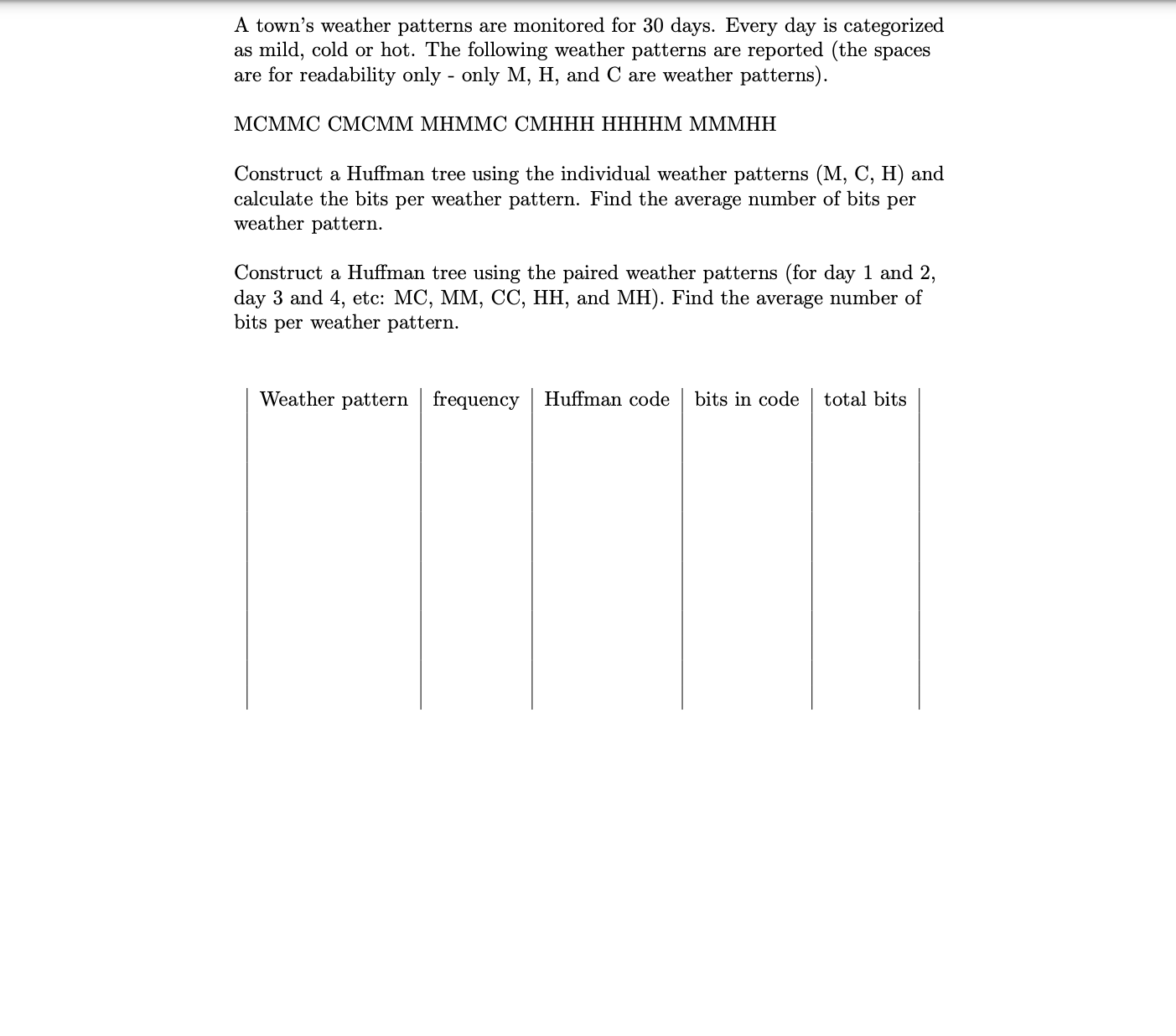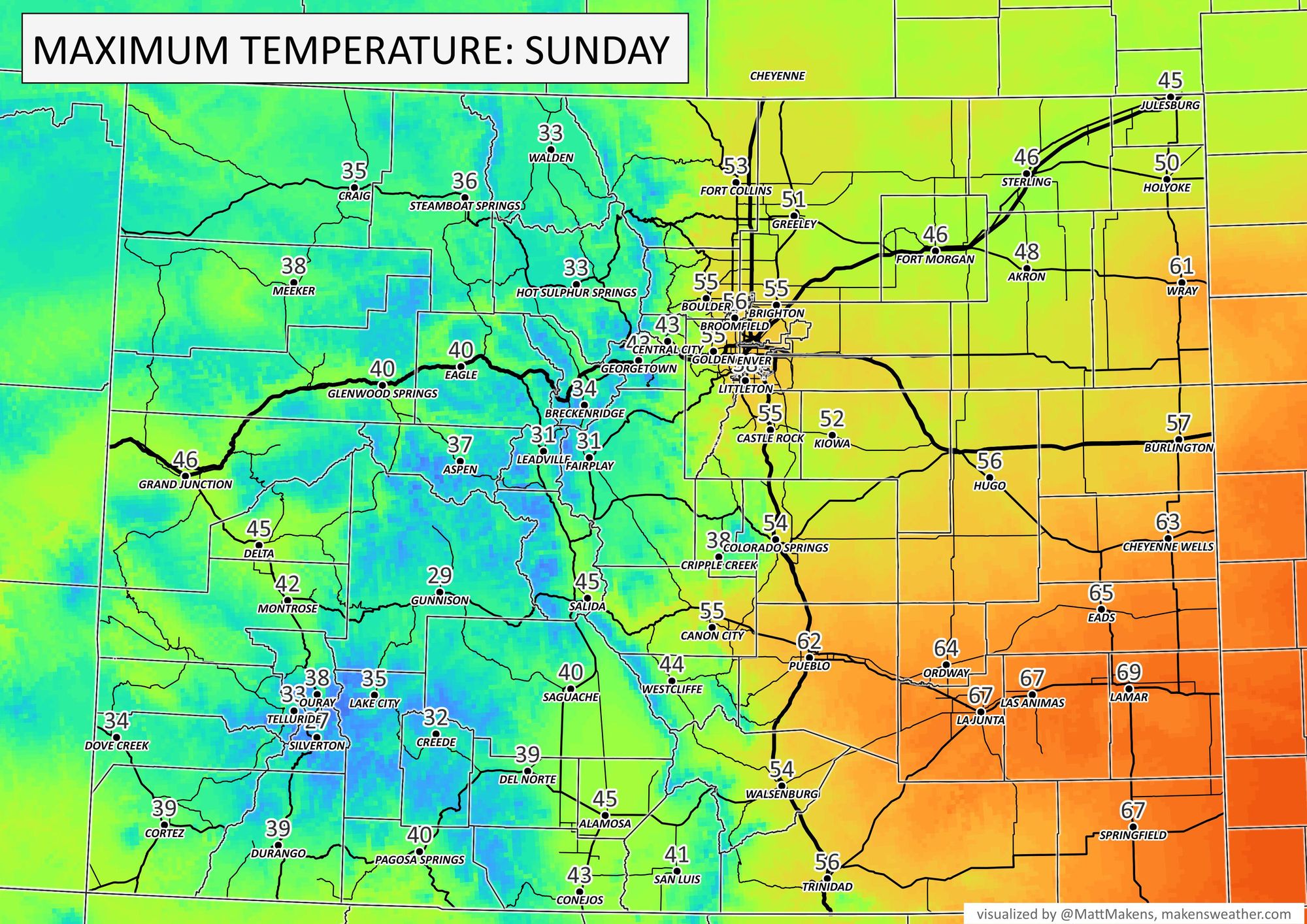想知道辛辛那提的天气状况?"探索辛辛那提的天气模式:居民和游客的综合指南"来解答疑问!
编辑注:"探索辛辛那提的天气模式:居民和游客的综合指南"现已发布。了解辛辛那提的天气模式至关重要,因为它影响着该地区的经济、生活方式和自然环境。
我们的团队经过分析和研究,汇编了这份"探索辛辛那提的天气模式:居民和游客的综合指南",旨在帮助目标受众做出正确决策。
主要差异或要点:
| 特征 | 辛辛那提 |
|---|---|
| 气候类型 | 大陆性气候 |
| 平均气温 | 54.6°F (12.6°C) |
| 降水量 | 43.68 英寸 (1110 毫米) |
正文主题:
FAQ
Our comprehensive guide to Cincinnati's weather patterns provides essential information for residents and visitors alike. To enhance your understanding, we have compiled a list of frequently asked questions and their corresponding answers below.

Solved A town's weather patterns are monitored for 30 days. | Chegg.com - Source www.chegg.com
Question 1: What is unique about Cincinnati's weather patterns?
Cincinnati experiences a humid subtropical climate, characterized by hot, humid summers and relatively mild winters. The city's location in the transition zone between the Midwest and the Northeast influences its weather, resulting in frequent changes in temperature and precipitation.
Question 2: How do seasonal changes affect Cincinnati's weather?
Summer in Cincinnati brings high temperatures and humidity, with average highs reaching the mid-80s Fahrenheit (29 Celsius). Winters tend to be mild, with average lows in the mid-20s Fahrenheit (-3 Celsius). Spring and fall offer pleasant temperatures, making them ideal for outdoor activities.
Question 3: What are the average precipitation levels in Cincinnati?
Cincinnati receives ample precipitation throughout the year, with an average annual rainfall of around 42 inches (107 centimeters). The city experiences a relatively even distribution of precipitation across the seasons, with occasional periods of heavy rainfall or snowfall.
Question 4: How can I prepare for extreme weather events in Cincinnati?
While extreme weather events are not common in Cincinnati, it is crucial to be aware of potential hazards such as tornadoes and thunderstorms. Stay informed about weather forecasts, have an emergency plan in place, and consider purchasing appropriate insurance coverage.
Question 5: What are some weather-related activities to enjoy in Cincinnati?
Cincinnati offers various weather-related activities for residents and visitors. During the summer, take advantage of the outdoor concerts and festivals held in parks and along the riverfront. In the winter, enjoy ice skating at Fountain Square or visit the Krohn Conservatory's annual "Butterflies & Blooms" exhibit.
Question 6: How does climate change impact Cincinnati's weather?
Climate change is influencing Cincinnati's weather patterns, leading to increased temperatures, more frequent extreme weather events, and changes in precipitation levels. Understanding these impacts is essential for adapting to future weather conditions and mitigating their potential effects.
By addressing these common questions, we hope to enhance your knowledge of Cincinnati's weather patterns and provide you with valuable information for planning your activities and adapting to the city's unique climate.
Proceed to the next article section for further insights into Cincinnati's weather history, seasonal highlights, and climate change projections.
Tips
Cincinnati's weather patterns can be unpredictable, so it's essential to be prepared for anything. Here are some tips to help you stay safe and comfortable:
Tip 1: Dress in layers.
The temperature can fluctuate significantly throughout the day in Cincinnati, so it's best to dress in layers so you can adjust your clothing as needed. A light jacket or sweater is a good option to have on hand, even in summer.
Tip 2: Be aware of the weather forecast.
Before you head out for the day, check the weather forecast to see what the day's weather conditions are expected to be. This will help you plan your activities and pack accordingly.
Tip 3: Stay hydrated.
It's important to stay hydrated, especially in hot and humid weather. Drink plenty of water throughout the day, even if you don't feel thirsty.
Tip 4: Seek shelter from the sun.
The sun's rays can be harmful, so it's important to seek shelter from the sun whenever possible. Wear sunscreen, sunglasses, and a hat when you're outdoors.
Tip 5: Be prepared for severe weather.
Cincinnati is prone to severe weather, such as thunderstorms, tornadoes, and hail. Have a plan in place for what you will do if severe weather strikes. This may include staying indoors, going to a designated shelter, or evacuating.
By following these tips, you can stay safe and comfortable during Cincinnati's unpredictable weather.
For more information on Cincinnati's weather patterns, see Discover Cincinnati's Weather Patterns: A Comprehensive Guide For Residents And Visitors.
Discover Cincinnati's Weather Patterns: A Comprehensive Guide For Residents And Visitors
Understanding Cincinnati's multifaceted weather patterns is crucial for planning and safety. This guide explores six key aspects to help discern the city's changing climate.
- Seasonal Transitions: Cincinnati experiences all four seasons, with distinct transitions.
- Precipitation Patterns: Rainfall is abundant year-round, with significant snowfall in winter.
- Temperature Variations: Summers are hot and humid, while winters are cold and snowy.
- Wind Patterns: Prevailing winds come from the west, bringing moisture and mild temperatures.
- Severe Weather: Tornadoes, thunderstorms, and hail are possible occurrences.
- Climate Change Impact: Rising temperatures and increased precipitation intensity are anticipated.
These aspects contribute to Cincinnati's unique weather patterns. For instance, the city's location at the confluence of different air masses leads to frequent precipitation. The proximity to the Ohio River influences temperature variations, moderating winters and contributing to summer humidity. Recognizing these aspects enhances preparedness for diverse weather conditions and helps tailor activities accordingly.

Colorado Weather: Snow, blowing snow, and warming temperatures - Source www.weather5280.com
Discover Cincinnati's Weather Patterns: A Comprehensive Guide For Residents And Visitors
Cincinnati's weather patterns are influenced by its location in the Midwest, its proximity to the Ohio River, and the surrounding topography. The city experiences a humid continental climate, with hot, humid summers and cold, snowy winters. Spring and fall are typically mild, with average temperatures in the 50s and 60s. Residents can expect to see plenty of sunshine year-round, with an average of 200 sunny days per year.

SOLUTION: Changing climate patterns a closer look at earth s weather - Source www.studypool.com
The Ohio River has a significant impact on Cincinnati's weather patterns. The river acts as a heat sink, keeping temperatures cooler in the summer and warmer in the winter. The river also helps to create fog, which is common in the morning and evening hours. The surrounding topography also plays a role in Cincinnati's weather. The city is located in a valley, which can trap cold air in the winter and lead to temperature inversions. The hills surrounding the city can also create wind tunnels, which can make the wind feel stronger than it actually is.
Understanding Cincinnati's weather patterns is important for residents and visitors alike. Residents can use this information to plan their activities and prepare for the changing seasons. Visitors can use this information to pack the appropriate clothing and plan their activities accordingly. For example, if you are visiting Cincinnati in the summer, you should pack light, airy clothing and be prepared for hot, humid weather. If you are visiting in the winter, you should pack warm clothing and be prepared for cold, snowy weather.
| Month | Average Temperature | Average Precipitation |
| January | 29°F (-2°C) | 3.1 inches |
| February | 33°F (1°C) | 2.9 inches |
| March | 43°F (6°C) | 3.5 inches |
| April | 54°F (12°C) | 3.7 inches |
| May | 64°F (18°C) | 4.2 inches |
| June | 74°F (23°C) | 4.1 inches |
| July | 79°F (26°C) | 3.8 inches |
| August | 78°F (26°C) | 3.2 inches |
| September | 70°F (21°C) | 3.0 inches |
| October | 58°F (14°C) | 2.8 inches |
| November | 45°F (7°C) | 2.7 inches |
| December | 34°F (1°C) | 3.0 inches |
Conclusion
Cincinnati's weather patterns are complex and ever-changing. However, by understanding the basics, residents and visitors can be better prepared for the changing seasons. For more information on Cincinnati's weather patterns, please consult the National Weather Service website or the Cincinnati Enquirer.
The information provided in this guide is for general knowledge purposes only. It is not intended to be a substitute for professional advice from a qualified meteorologist or other weather expert.